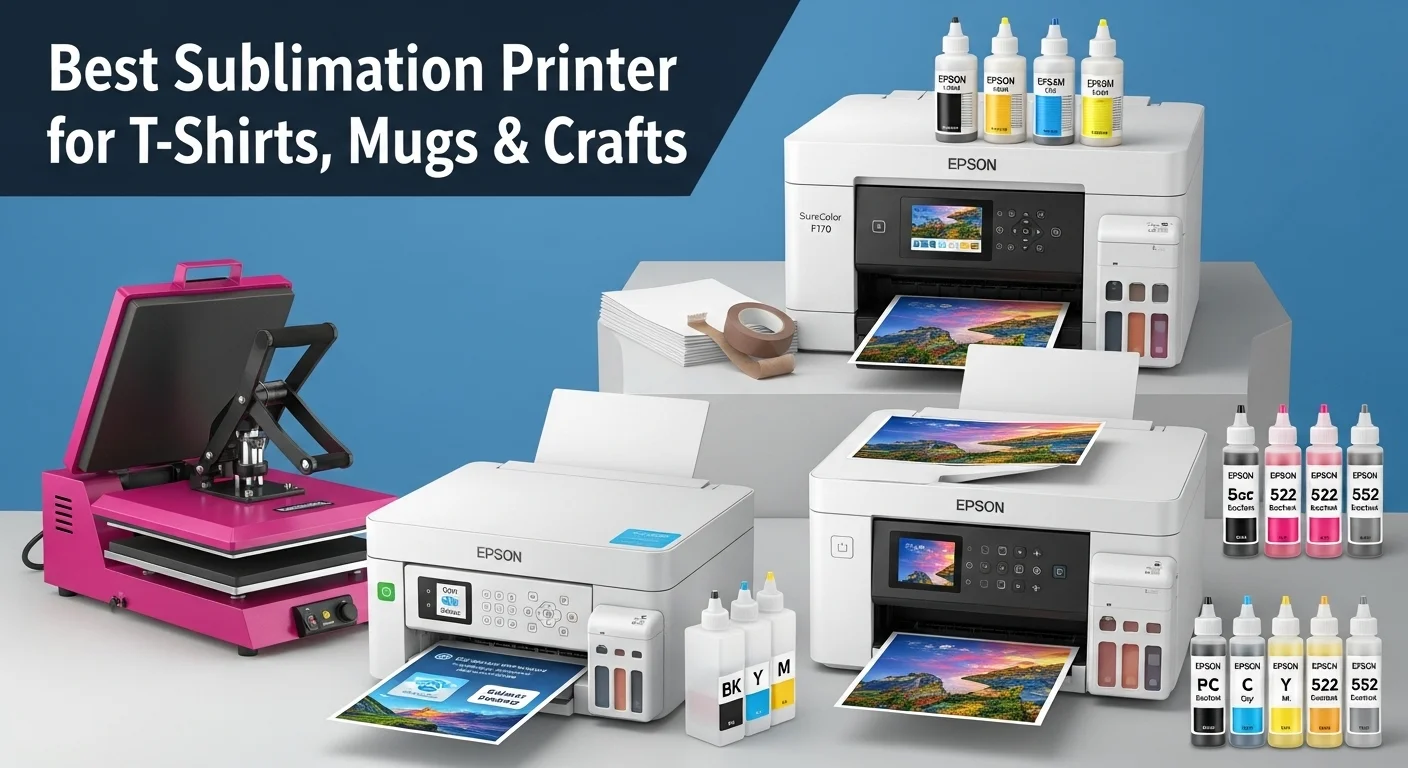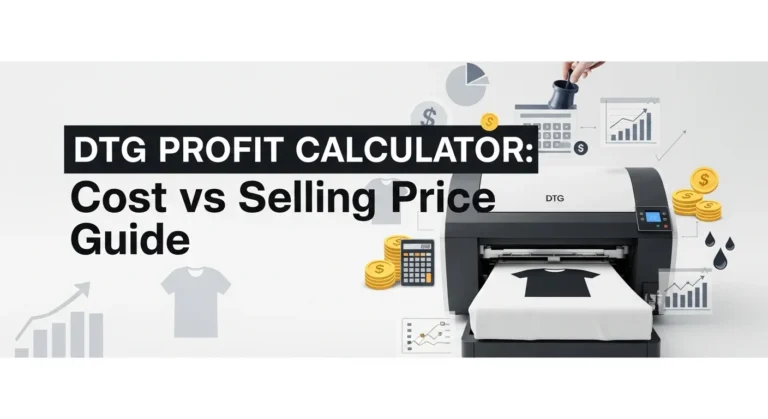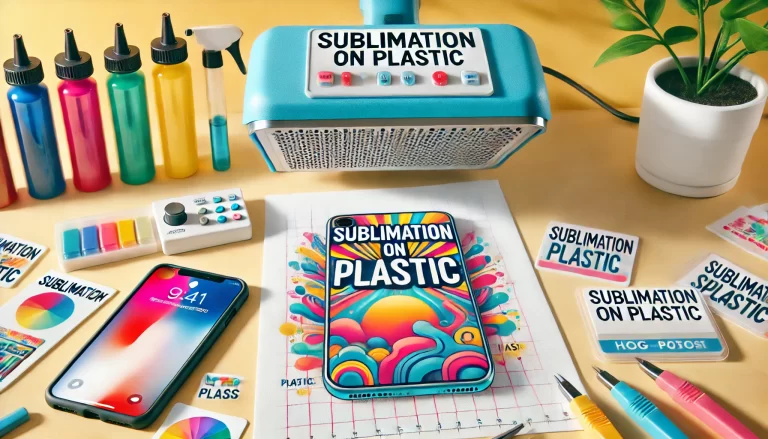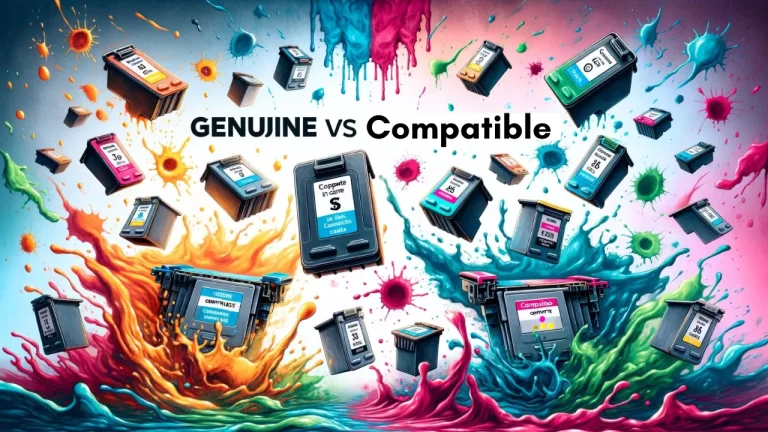What Kind of Printer is Needed for Sublimation:
A sublimation setup needs either a purpose-built dye-sublimation printer (Sawgrass, Epson SureColor series) or an inkjet converted to use sublimation ink.
For best color and support pick a purpose-built model; for tight budgets many people convert EcoTank-style printers but that can affect support if things go wrong. Use polyester or polymer-coated blanks (65%+ polyester for apparel) and a heat press at typical sublimation temps.
A sublimation printer is a device that uses heat to transfer dye onto materials like fabric or ceramics. Commonly made with Epson EcoTank or SureColor models, these printers are ideal for creating custom T-shirts, mugs, and more.
Prices range from $199 to over $2,000, depending on features and scale. They save time and money by offering high-quality, long-lasting prints with minimal setup.
Best Sublimation Printer for T-Shirts, Mugs & Crafts
When I started my crafting journey, picking a sublimation printer felt like a maze. I wanted vibrant, lasting prints for T-shirts and mugs without breaking the bank. Here’s what I learned to help you choose the perfect printer for your projects.
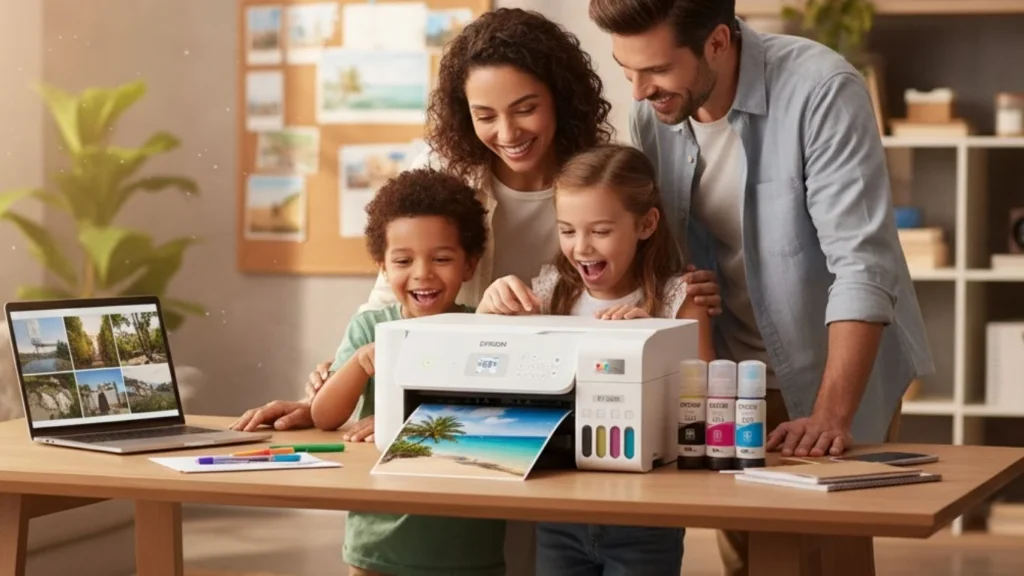
What printer is needed for sublimation?
A dye-sublimation printer (or an inkjet converted to run sublimation ink) is required, purpose-built models like the Sawgrass SG500 or Epson SureColor F170 give the easiest, most consistent results.
Which sublimation printer is best for beginners?
Epson EcoTank ET-2800 ($199). It’s budget-friendly, compact, and has an easy refill system, perfect for hobbyists starting with T-shirts or crafts.
What’s the best sublimation printer for small businesses?
The Sawgrass Virtuoso SG500 ($699) was a game-changer. Its vibrant colors and media versatility deliver consistent, professional prints for T-shirts and gifts.
How much does a sublimation printer cost?
Printers range from $199 to $2,500. My beginner setup cost around $300, but businesses might spend $1,500+ for high-volume machines with reliable output.
What features should I look for in a sublimation printer?
Here’s what I check:
- Print size: Matches my project needs (e.g., 13×19 for big designs).
- Ink system: Easy refills save hassle.
- Durability: Handles frequent use.
- Media compatibility: Works for T-shirts, mugs, or other crafts.
Comparison Table:
| Printer | Best For | Price | Key Features |
|---|---|---|---|
| Epson EcoTank ET-2800 | Beginners, hobbyists | $199 | Affordable, compact, easy refills |
| Epson SureColor F170 | Small business, startups | $499 | Dedicated sublimation, reliable prints |
| Epson EcoTank ET-15000 | Medium prints | $599 | Wide format, multi-function, large designs |
| Sawgrass Virtuoso SG500 | Business, high-quality gifts | $699 | Vibrant colors, multiple media |
How do I set up a sublimation printer?
- Get a sublimation printer or convert an inkjet model.
- Use dye-sublimation ink and special paper.
- Pair with a heat press for transfers.
- Test prints to ensure vibrant results.
What are the ongoing costs of sublimation printing?
My starter setup cost $300-$700 (printer, ink, paper, heat press). Businesses may spend $1,500+. Ink and paper refills run $50-$150 monthly, depending on print volume.
Best Sublimation Printers for My Crafting Needs
I love the Epson EcoTank ET-2800 ($199). It’s compact, affordable, and easy to use, with refillable ink tanks that keep costs low for my T-shirt and mug projects.
What’s the best printer for small businesses?
The Epson EcoTank ET-15000 ($599) is my go-to. Its wide-format 13×19 printing handles larger designs, perfect for my small business making custom apparel and signs.
What printer suits advanced or high-volume printing?
For my pro-level projects, the Epson EcoTank ET-8550 ($799) shines. Its six-color ink system and A3+ printing deliver stunning, large-scale prints for crafts and gifts.
Why choose the Epson F170 for sublimation?
The Epson F170 ($499) is my pick for simplicity. It’s built for sublimation, compact for my small workspace, and delivers reliable prints without needing conversion.
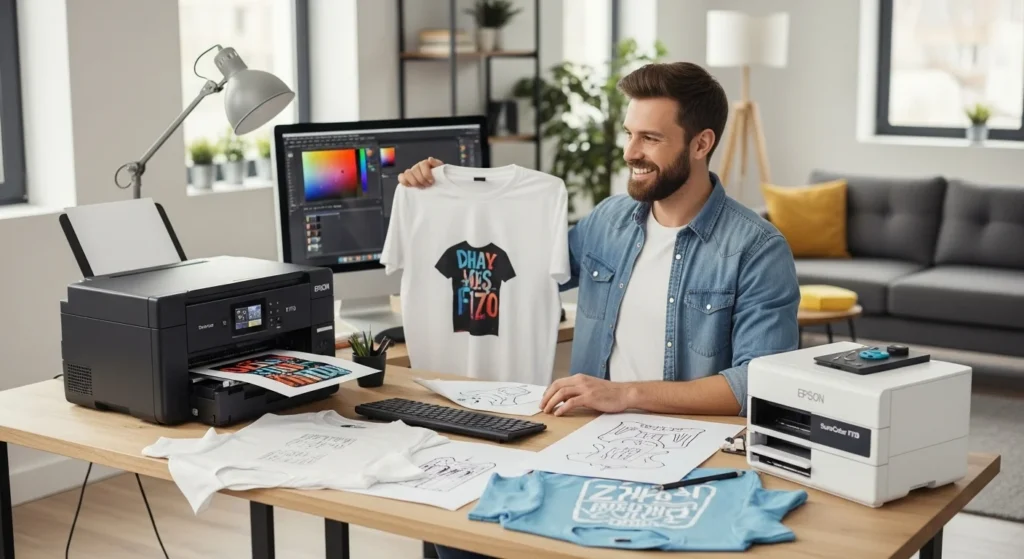
What makes Sawgrass printers stand out?
Sawgrass Virtuoso SG500 ($699) perfect for professional results. Its tailored inks and software ensure vibrant colors, though the ink costs can add up.
Comparison Table:
| Printer | Best For | Price | Key Features | Drawbacks |
|---|---|---|---|---|
| Epson EcoTank ET-2800 | Beginners | $199 | Affordable, easy refills, compact | Smaller print size (8.5×14) |
| Epson EcoTank ET-15000 | Small businesses | $599 | Wide format (13×19), versatile | Higher initial cost |
| Epson EcoTank ET-8550 | Advanced users | $799 | Six-color ink, A3+ printing | Complex setup |
| Epson F170 | Beginners, small-scale | $499 | Pre-configured, reliable | Limited to 8.5×14 prints |
| Sawgrass SG500 | Professionals | $699 | Vibrant colors, great software | Expensive inks |
How do I handle printer issues?
- Ink clogs: I use sublimation-specific inks to avoid blockages.
- Printhead care: I clean monthly to keep prints sharp.
- Conversion risks: I follow guides carefully when converting inkjets like the EcoTank for sublimation.
What about specialty or high-volume needs?
- Tumblers: I pick printers like the F170 for small, coated items.
- Large format: The Epson SureColor F570 ($2,000) handles banners.
- Apparel: I ensure my printer supports fabric inks for various garment sizes.
How I Pick the Perfect Sublimation Printer for My Needs
When I started sublimation printing, I was swamped with options. Whether I’m crafting for fun, running a small business, or cranking out high-volume orders, I’ve learned to focus on what matters most. Here’s how I choose the right printer for my projects.
What’s the best printer for beginners like me?
I love the Epson EcoTank ET-2800 ($199) for its affordability and simple setup. Its wireless printing is a breeze, and the Epson SureColor F170 ($499) gives me vibrant prints with no conversion hassle.
Tip: I pick printers with easy Wi-Fi setup and plenty of online tutorials.
Which printer works for my small business?
For my small business, the Epson EcoTank ET-15000 ($599) handles bigger 13×19 prints for custom apparel. The Sawgrass SG500 ($699) is my go-to for consistent colors and great support.
Consideration: I always check ink and maintenance costs to keep my profits up.
What printer suits my high-volume production?
When I need to print a lot, the Epson SureColor F570 ($2,000) is my pick for its speed and roll media support. The Sawgrass SG1000 ($1,250) nails high-definition prints for pro-level work.
Note: I match the printer’s speed and media options to my production needs.
How do Epson, Sawgrass, and other brands compare?
| Feature | Epson EcoTank ET-2800 | Sawgrass SG500 | Other Brands |
|---|---|---|---|
| Print Size | Up to 8.5×14 | Up to 8.5×14 | Varies |
| Ink Cost | Low | High | Varies |
| Setup | Easy | Moderate | Varies |
| Support | Extensive | Extensive | Varies |
My Favorite Sublimation Starter Kits and Bundles
When I kicked off my sublimation printing adventure, I was thrilled to find starter kits that bundled everything I needed. They saved me money and hassle, letting me focus on creating vibrant T-shirts and mugs. Here’s what I’ve learned about the best kits for different needs.
What’s in the Epson F170 Starter Kit for beginners?
I love the Epson F170 Starter Kit ($499) for newbies. It’s got:
- Epson F170 SureColor Printer
- CMYK ink set (140ml each)
- Sublimation paper (8.5×11 and 8.5×14)
- Thermal tape
- Starter blanks (mugs, coasters)
- User guide
It’s everything I needed to start printing right away.
What does the Epson F170 Ultimate Kit offer?
For my bigger projects, I’d pick the Epson F170 Ultimate Kit ($949). It adds:
- Sublimation oven
- Mini heat press
- Extra blanks
- Creative design packs
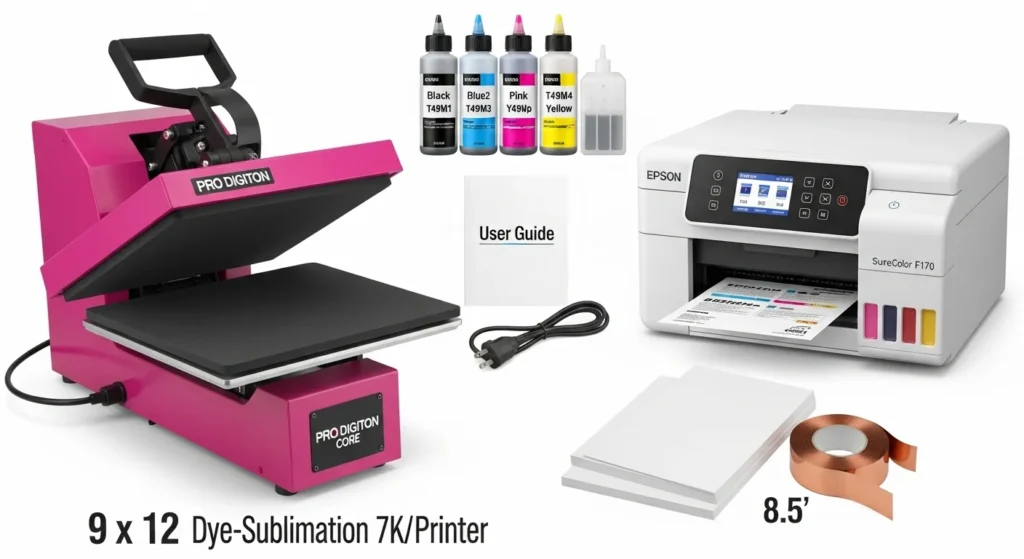
I save over $300 compared to buying separately, which is a win for my wallet.
What’s great about the Epson F570 Pro Starter Kit?
For my small business, the Epson F570 Pro Starter Kit ($2,895) is perfect. It includes:
- Epson F570 Pro 24” printer
- Two CMYK ink sets (140ml each)
- Sublimation paper (11×17)
- Blanks (tumblers, keychains)
- Mini starter kit
It’s a pro setup for my high-quality prints.
Why choose the Epson F570 Pro Oven Kit?
When I focus on tumblers, I go for the Epson F570 Pro Oven Kit ($3,195). It adds:
- Sublimation oven
- More blanks
This kit nails personalized items, saving me time and boosting my output.
What accessories come with these kits?
Most kits I’ve used include:
- Blanks: Mugs, tumblers, coasters, or keychains.
- Papers: High-quality sublimation paper for crisp prints.
- Heat Press Tools: Thermal tape and gloves for safe, easy transfers.
These extras let me dive into creating without hunting for supplies.
How I Set Up My Sublimation Printer
When I first got my sublimation printer, I was excited but a bit nervous about setting it up right. Getting those vibrant T-shirts and mugs starts with a solid setup. Here’s how I do it, step by step, to make my projects pop.
How do I install and fill sublimation ink?
I start by unpacking my printer, like the Epson EcoTank ET-2800, and placing it on a flat surface. Then:
- I fill the tanks with sublimation-specific CMYK ink (about 140ml each).
- I gently shake the ink bottles to mix and pour carefully to avoid spills.
- I run a test print to ensure the ink flows smoothly.
Tip: I only use sublimation ink to prevent clogs and get bright colors.
How do I calibrate print settings for vibrant colors?
To make my designs shine, I tweak the settings:
- I set the resolution to 300 DPI or higher in my design software.
- I use ICC color profiles (provided by the printer or ink brand) for accurate colors.
- I adjust brightness and contrast on test prints to match my screen.
Tip: I print a color chart first to check for any off shades.
What heat press do I need for T-shirts, mugs, and more?
I use a heat press to transfer my designs:
- T-shirts: A flat press (400°F, 45-60 seconds) works for polyester fabrics.
- Mugs: A mug press (380°F, 3-4 minutes) ensures even pressure on ceramics.
- Other items: I use a combo press or oven for tumblers and coasters.
Note: I always check the substrate’s heat and time requirements.
How do I avoid common setup mistakes?
I’ve learned from my slip-ups:
- Wrong ink: I stick to sublimation ink, not regular inkjet ink.
- Poor alignment: I double-check paper loading to avoid crooked prints.
- Overheating: I test heat press settings on scrap material first.
- Skipping cleaning: I clean the printhead monthly to prevent clogs.
Tip: I keep a log of my settings for each project to stay consistent.
Key Features I Look for in a Sublimation Printer
When I started hunting for a sublimation printer, I quickly realized it’s not just about the price tag. I wanted a machine that could bring my T-shirt and mug designs to life with vibrant colors and lasting quality. Here’s what I focus on to pick the perfect printer for my crafty projects.
What resolution and color accuracy do I need?
I always check for at least 300 DPI to get crisp, detailed prints. For my photo-heavy designs, I pick printers with strong color accuracy to make every shade pop just right.
What print size and materials should my printer handle?
I make sure the printer fits my project sizes—8.5×11 inches for small stuff or 13×19 for bigger designs. It’s gotta work with polyester fabrics, coated mugs, or even metal panels for my custom crafts.
Why does the ink system and printhead matter?
I stick to printers with sublimation-specific inks for bold, durable prints. A solid printhead is a must too—it keeps my prints consistent and saves me from costly repairs down the line.
How important is connectivity and software?
I love printers with flexible options like USB or Wi-Fi to fit my workspace. Good software support, like ICC profiles for color tweaks, makes my design process smoother and more precise.
What about maintenance and support?
I go for printers that are easy to clean and maintain—no complicated parts. Reliable customer support, plus user manuals and online tutorials, keeps me stress-free when things go wonky.
How do I balance price and value?
I compare the printer’s cost to its features. Cheap isn’t always best if inks or paper eat up my budget. I look for durability and performance to get the most bang for my buck.
Comparison Table:
| Feature | Why It Matters | My Pick |
|---|---|---|
| Resolution | Sharp, vivid prints | 300 DPI or higher |
| Print Size | Fits my project needs | 8.5×11 or 13×19 |
| Ink System | Vibrant, lasting colors | Sublimation-specific inks |
| Connectivity | Easy setup | USB, Wi-Fi, Ethernet |
| Maintenance | Less hassle | Simple cleaning, good support |

Printer Conversion vs. Purpose-Built Sublimation Printers
Can You Convert a Regular Inkjet Printer for Sublimation?
Some Epson EcoTank models can be converted by filling them with sublimation ink instead of regular ink. However:
- Conversion voids the warranty
- You can’t switch back to regular ink
- Color accuracy may suffer without ICC profiles
- Risk of clogging if not used regularly
A purpose-built printer like the Sawgrass SG500 or SG1000 is factory-optimized and comes with support, software, and consistent color output.
Printer Maintenance and Longevity Tips
Maintenance Tips to Keep Your Printer Running Smoothly
- Print at least once a week to prevent ink clogs
- Store in a clean, dry space away from dust
- Use genuine or high-quality third-party sublimation ink
- Keep firmware and driver software updated
Best Printers by Use Case or Budget
Best Sublimation Printers by Category
| Use Case | Printer Model | Price Range | Key Features |
|---|---|---|---|
| Hobbyist | Epson EcoTank ET-2800 | $199 | Budget-friendly, easy to convert |
| Beginners | Epson SureColor F170 | $399 | Plug-and-play, consistent quality |
| Small Businesses | Sawgrass SG500 | $599 | Pro software, great support |
| Wide-Format Prints | Epson WorkForce WF-7720 | $299 | Prints up to 13″x19″, extra features |
Comparison Table: Sublimation vs Regular Inkjet Printers
| Feature | Sublimation Printer | Regular Inkjet Printer |
|---|---|---|
| Ink Type | Sublimation Dye Ink | Dye or Pigment Ink |
| Compatibility | Only on polyester/coated | Almost any type of paper |
| Durability of Print | Permanent (no fading/peel) | Fades over time |
| Use Case | Apparel, mugs, products | Documents, photos |
| Cost per Page | Higher (at first) | Lower for standard printing |
ICC Profiles and Color Management Basics
Don’t Skip Color Profiles (ICC Files)
ICC profiles help your printer interpret colors correctly from screen to substrate. Without them, reds can look orange or blacks may turn brown. Sawgrass printers come with preloaded profiles. For converted printers, download the correct ICC file from the ink supplier.
Troubleshooting Common Sublimation Printer Issues
| Issue | Possible Fix |
|---|---|
| Faded or dull prints | Increase press time or temp, check pressure |
| Lines or banding in print | Run printhead cleaning |
| Ink not transferring properly | Use high-poly content blanks |
| Wrong colors after transfer | Install ICC profile, check mirror setting |
What Makes Sublimation Unique?
| Feature | Why It Matters |
|---|---|
| Dye-to-gas transition | No liquid phase avoids bleeding or smudging |
| Molecular bonding | Prints won’t flake, crack, or peel over time |
| Surface requirement | Only works on polyester or polymer-coated items |
- Best results come from items with at least 65% polyester content
- Average heat press settings range from 385°F to 400°F
- Sublimation ink doesn’t work on cotton, wood, or uncoated surfaces
You can check our training section for better understanding.
Where I Buy My Sublimation Printers and Kits
I remember when I was hunting for my first sublimation setup, I spent hours scrolling sites and calling stores to avoid getting ripped off. Turns out, sticking to legit spots makes all the difference for quality gear and no headaches later. Whether it’s an Epson or Sawgrass bundle, here’s where I go and what I’ve picked up along the way.
Where can I find authorized Epson and Sawgrass resellers?
I always hit up authorized sellers to keep my warranty safe and get real support. For Epson SureColor models like the F170 or F570, check these:
- MakerFlo: They stock bundles with inks and paper, super handy for starters.
- HeatPressNation: Great for pro kits, including heat presses.
- Epson’s official site: Links to their pro imaging resellers for direct buys.
For Sawgrass Virtuoso printers like the SG500, I trust:
- Sublimax: Affordable starter packs with UHD inks.
- SawgrassPrinter.com: Official authorized dealer with software included.
- US Cutter: Good for bundles and quick shipping.
These spots ensure you’re getting genuine parts, not knockoffs that clog up fast.
What’s better, online or local stores?
Online wins for me most days because of the deals and endless options. Amazon has Epson EcoTanks cheap, and sites like MakerFlo ship kits overnight. Plus, reviews help spot fakes quick. But local? I head to Best Buy for hands-on demos, or craft shops like Michaels for advice without waiting on delivery.
It depends on your vibe. If you’re testing prints same-day, local’s clutch. For saving cash on bundles, online all the way. I mix both, grab basics in-store, then bulk online.
Any tips for safe buys and warranties?
Don’t rush it, or you’ll regret it like I did once with a shady eBay deal. Read reviews on multiple sites, and stick to sellers with return policies over 30 days. Pay with a card for buyer protection, and double-check stock before checkout, especially for hot items like the F170.
On warranties, Epson gives a year onsite for SureColor, but converting an EcoTank voids it instantly. Sawgrass offers two years on printers, but only with their inks, no third-party stuff. Register right away, and keep receipts. If something breaks, call support first, not the trash bin.
My Go-To Spots Table
| Brand | Online Spots | Local Options | Why I Like ‘Em |
|---|---|---|---|
| Epson | MakerFlo, Amazon, Epson.com | Best Buy, Office Depot | Bundles with free shipping |
| Sawgrass | Sublimax, SawgrassPrinter.com | Specialty print shops | Warranty perks and support |
What other equipment is needed
1. Heat Press
In addition to a sublimation printer, you’ll also need a heat press. A heat press is a machine that uses heat and pressure to transfer the sublimation ink from the paper onto the substrate. Different heat presses include clamshell, swing-away, and multi-function presses.
2. Sublimation Paper
You’ll also need sublimation paper, which is a special kind of paper that’s designed to work with sublimation ink. The paper has a special coating that helps the ink transfer to the substrate more effectively.
3. Sublimation Ink
Finally, you’ll need sublimation ink. This is a special kind of ink designed to turn into a gas when heated, allowing it to bond with the substrate. It’s essential to use high-quality sublimation ink to get the best results.
Tips for choosing the right printer
- Look for a printer that’s designed specifically for sublimation printing.
- Consider the print quality and resolution.
- Think about the size of the printer and the types of materials you’ll be printing on.
- Look for a printer compatible with the sublimation ink and paper you plan to use.
How to set up
- Install the printer drivers and software.
- Install the sublimation ink cartridges.
- Load the sublimation paper into the printer.
- Adjust the printer settings as needed.
- Print the design onto the sublimation paper.
- Heat press the design onto the substrate.
Check Out Full Sublimation Printing Guide
Unlock the full potential of sublimation printing with Subli Genius Print. If you’re a beginner or an expert, our comprehensive guides and expert tips will help you master the craft.
While there is a learning curve, sublimation printing is not overly difficult to learn with practice and patience. Further Reading Sources: What is Sublimation Printing and How Does it Work?
Extra Goodies to Level Up Your Sublimation Game
I remember my first wonky heat press attempt – total disaster, but now I crank out mugs like it’s nothing. These resources helped me fix that. I’ll break ’em down quick, with what I like and why.
Best Heat Press Machines for Sublimation
I started cheap and regretted it – uneven heat wrecked a batch of tees. Now I swear by ones that heat fast and hold steady.
Here’s my shortlist from what I’ve tried and seen folks rave about lately:
- Slendor 5-in-1 ($150-ish): Great for newbies juggling shirts, mugs, and hats. Heats to 482°F quick, digital timer, and attachments make it versatile. Super even pressure, no scorching my stuff.
- Geo Knight Swing-Away ($800+): My upgrade pick for small biz. Swings open easy, pro-level build, and handles tumblers like a dream. Worth the cash if you’re pressing daily.
- HeatPressNation 8-in-1 Mug Press ($200): If mugs are your jam, this one’s a beast. Fits every size, even skinny ones, and presses two at once. Saved me hours on batches.
| Machine | Price | Best For | Why It Rocks |
|---|---|---|---|
| Slendor 5-in-1 | $150 | Beginners, multi-use | Affordable, attachments galore |
| Geo Knight | $800 | Pros, heavy use | Durable, even heat |
| HeatPressNation 8-in-1 | $200 | Mugs/tumblers | Versatile shapes, fast |
Pro tip: Always preheat your blank and use butcher paper on top. I learned that after ghosting a whole set.
Best T-Shirts for Sublimation (Polyester vs Blends)
Pure polyester wins for vibrancy ’cause the dye bonds right in, but blends feel nicer on skin. I mix ’em: poly for bold designs, blends for comfy everyday stuff.
Pure polyester: 100% locks in colors forever, no cracking. But it can feel plasticky. Blends (65%+ poly): Softer, breathable, but might dull a tad after washes.
Top picks I’ve grabbed lately:
- Jerzees 21MR Sports Performance (100% poly, $5-7): My fave – lightweight, wicks sweat, prints pop bright. Feels less cheap than basic Gildan.
- Cricut Polyester Tee (100% poly, $10): Soft like cotton but holds designs sharp. Great for all-over prints.
- Next Level Triblend (50/25/25 poly/cotton/rayon, $6): Comfy as heck, but only for lighter designs since poly’s lower.
Poly vs blends? Go 100% for max color punch on white/light tees; blends if folks complain about stiffness. I wash mine inside out cold – keeps ’em fresh years.
Sublimation Paper Guide and Printing Tips
Matte side prints, shiny side down on your blank. Always mirror your image in software – flips back right when pressed. Size? Match your blank, add bleed if edges matter.
Tips that saved my sanity:
- Print on “matte presentation” setting, high quality, no high-speed.
- 300 DPI min for sharp edges; RGB mode for true colors.
- Dry prints 24 hours before pressing, or they ghost.
- Use heat tape to secure – no shifts mid-press.
Brands: Cricut ($15/pack) for easy feed; A-Sub ($20/100 sheets) for bulk value. I cut extras to fit odd blanks. Oh, and preheat everything – wrinkles kill vibes.
How to Resize and Optimize Images for Sublimation
Resizing wrong? Your print looks like a blurry mess. I used to drag in Canva and call it good, but nah – optimize first or waste paper. Aim for 300 DPI, RGB colors, and mirror for transfer.
Step-by-step I follow:
- Open in freebies like Canva or GIMP. Crop tight, no white borders.
- Resize to blank size (e.g., 8.5×11 for mugs) at 300 DPI. Vectors? Scale free; photos? Upscale smart to avoid pixels.
- Boost saturation 10-20% for pop – sublimation dulls a bit.
- Mirror horizontally (flip tool). Save PNG for transparency.
- Print test on plain paper, then tweak.
